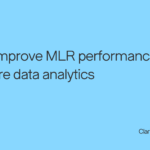Clinical Research News’ Deb Borfitz published an article about the importance of leveraging SDOH data to improve clinical trial diversity based on an interview with Clarify Health CEO and co-founder, Jean Drouin, MD. The original article was published here on November 15, 2022. Social Determinants Of Health Data Help Identify Sites For Trials By Deborah Borfitz November 15, 2022 | The movement toward decentralized clinical trials (DCTs) isn’t the only emerging trend that could help bump up clinical trial diversity. So, too, could the use of social determinants of health (SDOH) insights to better choose the sites and investigators most likely to enroll underrepresented individuals, according to Jean Drouin, MD, CEO and co-founder of Clarify Health. Study sponsors and contract research organizations (CROs) conducting trials could home in on “where diversity resides” based on a broad menu of social determinants—including reliable transportation, access to nutritious food, sufficient income to source that food, and a home environment conducive to recovery—and where those populations already go for routine care, he says. Earlier this year, Clarify Health began offering a new service (Clarify Trials) whereby companies could receive a list of the most-ideal sites for studies tied to the characteristics of patients they hope to enroll. The list is generated by software on Clarify Health’s Atlas platform that can identify populations, by geography, at the micro-cohort level, Drouin explains. It is an outgrowth of the company’s risk-adjustment work on behalf of payers and providers operating in value-based pay arrangements that financially reward the quality rather than the quantity of care rendered to patients. End users of Clarify Trials are typically study team members involved in the design of studies and strategies for recruiting participants, says Drouin. “We’re a little bit like a Bloomberg model of patient journey insights… we just provide the software and the analytics.” Solicitation of the sites is left to sponsors and CROs. Bigger Than Biology Information about the impact of external factors such as environment and behavior on human health has traditionally been hard to collect, as has verifying that a piece of data applies to one individual versus another, Drouin says. In both clinical research and clinical medicine, “we had a very limited view of social determinants.” The most-discussed factors for many years were a person’s age, gender, education level, and whatever could be gleaned from their ZIP code. The “science” of social determinants stopped beyond those metrics, he continues, so all that could be said about their effect on care were generalities. It has been more than a decade now since the notion of social determinants started expanding to consider access to transportation, food, income, and decent housing on care journeys and outcomes, says Drouin. Local efforts emerged where, for example, physicians might interview patients about potential problems getting to medical appointments and, if need be, provide transportation services. But people still struggled to gather a more comprehensive profile of individuals using “outside in” analytics on a combination of public and commercial datasets. When the massive silos of electronic health record, claims, and lab data first started getting linked together about five years ago, Drouin continues, important SDOH particulars were still missing. Clarify Health decided to investigate the tactics deployed by banks and online retailers like Amazon. The raw data used to come up with credit scores and likeliness-to-buy profiles on customers—including credit card purchasing history, the food they buy, and whether they have a driver’s license, live alone, and have a family member living within five miles of their home—could be repurposed to create a richer picture of the factors hindering patients’ care journeys, he says. It essentially offered an assessment of risk that would initially be available to care-planning clinicians. In the context of life sciences, the analytic capability was the means to identify a diversity of people more easily so they might be pursued for clinical trial enrollment, Drouin says. Studies have traditionally been preferentially placed at sites known to effectively recruit by volume, which oftentimes meant a participant pool far less representative of the population at large—where SDOH can play a larger role than biology in terms of outcomes of care journeys. This newfound ability of Clarify Health to identify clinicians and facilities serving more diverse populations comes in parallel with growing popularity of DCTs, he points out. Theoretically, this should make it easier to both set up sites and deliver trials with a more diverse population. Other potential benefits of these converging trends are introducing a new set of clinicians to clinical research and making trials feel more accessible (i.e., not at a big academic medical center) to communities that are understandably skeptical about participating due to historical events, Drouin adds. ‘Moneyball-Style’ Analytics Sponsors can utilize Clarify Trials to get a site list specific to the SDOH components of interest for a particular study. The more precise the criteria, the more effective and efficient the site-finding exercise, and therefore the shorter the duration and cost of the trial, says Drouin. “It’s a win-win-win for everyone.” The characteristics of interest (e.g., age, geography, income, race) can be used as a filter, allowing companies to “cohort in their own way,” he says. “Data governance and HIPAA rules around this are very clear—you can’t identify the individual. That said, you can identify the places where those kinds of individuals were seen” that can then be approached to help recruit them. Securely and compliantly connecting patent-level claims, prescription, and lab data is enabled by Datavant, which specializes in replacing private patient information with an encrypted “token” that can’t be reverse-engineered to reveal the original information, explains Drouin. Since Clarify Health is a qualified entity with the Centers for Medicare & Medicaid Services, it also has access to Medicare fee-for-service data. “We link all of that and we don’t know who the individuals are, but what we do know is that cardiologist Smith in Denver saw 600 individuals in the last year with this condition and here are the outcomes that were achieved and the therapies that were used, and we are able to see that for every cardiologist in the country,” he says. Clarify Trials can also do “Moneyball-style” analytics to more precisely assess the relative value created either by therapy, facility, or clinician. This SDOH-decorated dataset, as the data scientists at Clarity Health have termed it, essentially enriches or “decorates” claims, prescription, and lab datasets, like a Christmas tree, with “ornaments of very granular social determinants markers,” Drouin metaphorically explains. ‘Switzerland Platform’ Payers and providers are likewise interested in incorporating SDOH information into clinical and reimbursement decision-making in the context of value-based care programs. The shift away from fee-for-service to fee-for-value payment schemas requires a means to assess clinicians and hospitals in a risk-adjusted way so they are fairly rewarded for the quality of care they provide, Drouin says. “We are the Switzerland platform that sits between payers and providers… and we are trusted to calculate, adjudicate, and settle these value-based arrangements.” Clarify Trials hasn’t been on the market long enough to say how much it may help improve diversity in the clinical trial space, Drouin says. But the U.S. Food and Drug Administration has been insisting on it and there is talk that in the future Medicare will only pay for drugs that have gone through studies that are more representative of the larger population. Meanwhile, debate continues about the “right approach” to identifying the underlying root drivers of health independent of race and ethnicity, which is the current preference, he says. The concern is that including race as a specific determinant might perpetuate conscious or unconscious biases. On the other hand, some diseases are correlated with certain ethnic groups—e.g., sickle cell anemia affects African Americans at disproportionate rates—and race and ethnicity are the basis of how census data gets collected and subgroup analysis is done on clinical trial results. This article was originally published on Clinical Research News Online here: https://www.clinicalresearchnewsonline.com/news/2022/11/15/social-determinants-of-health-data-help-identify-sites-for-trials
- Author Details





